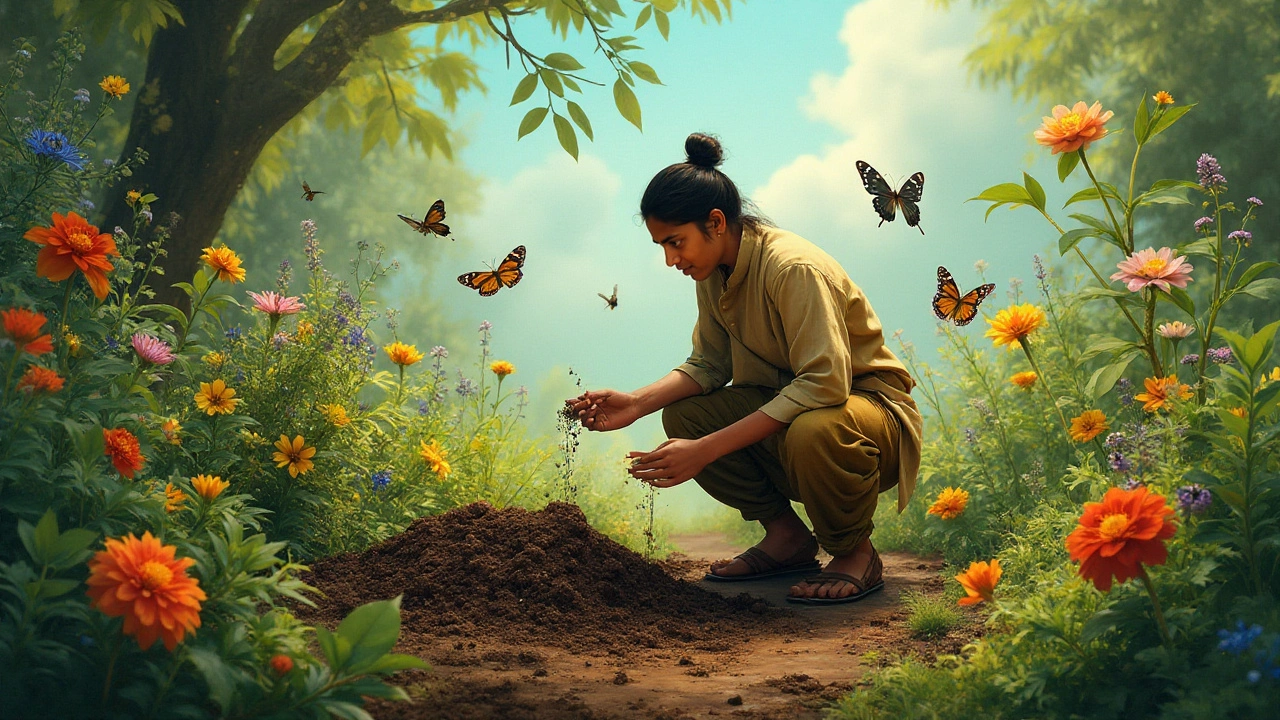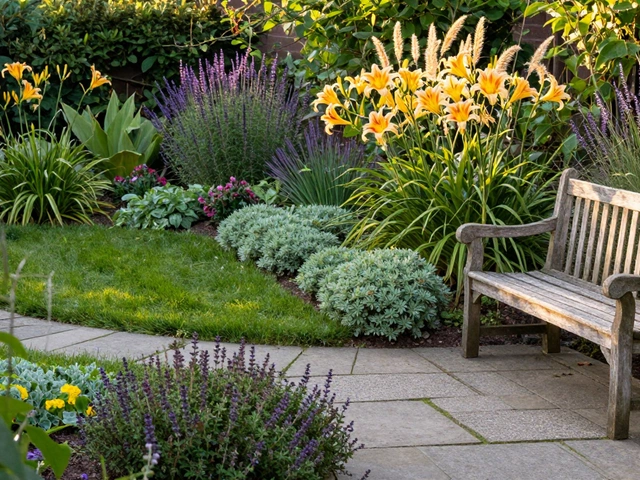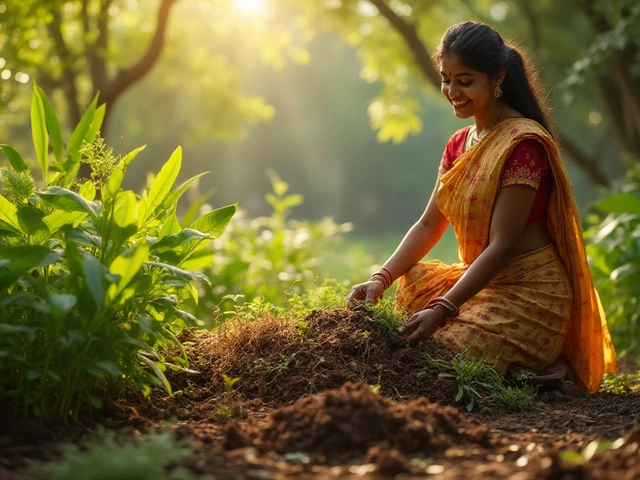Imagine stepping into your garden and finding it teeming with life at every turn. From the fluttering wings of butterflies to the busy hum of bees, a garden alive with biodiversity is a sight to behold. It's not just about aesthetic joy, though. It's about building a sanctuary that embraces the wisdom of nature—an ecosystem garden.
An ecosystem garden is more than a collection of plants. It's a system that encourages harmony among nature's creatures, creating a self-sustaining environment. By understanding the intricacies of natural ecosystems, you can craft a garden that requires less intervention and supports local wildlife.
Whether you're a seasoned gardener or a curious beginner, creating an ecosystem garden is a rewarding journey. It offers a chance to utilize sustainable gardening practices that not only benefit the environment but also enhance your well-being. Let's embark on this path toward a thriving backyard ecosystem.
- Understanding Ecosystem Gardening
- Essential Components of an Ecosystem Garden
- Steps to Create Your Own Ecosystem Garden
- Tips for Maintaining a Healthy Ecosystem Garden
Understanding Ecosystem Gardening
Ecosystem gardening is more than just planting a few flowers and vegetables; it’s about creating a harmonious balance where plants, animals, and microbes coexist in a productive relationship. This type of gardening focuses on sustainable gardening methods, minimizing environmental impact through a deliberate and thoughtful design. The idea is to mimic the intricate workings of natural ecosystems, where everything grows and thrives with minimal human interference. These gardens strive for balance, using natural processes to maintain healthy soil, control pests, and support a variety of life forms.
The first step in understanding ecosystem gardens is recognizing their core components—soil, water, air, flora, and fauna. Each element plays a crucial role in the ecosystem's functionality. Healthy soil acts as a foundation, rich in nutrients and microorganisms that promote plant growth. Water is the lifeblood, crucial for sustaining plants and animals, while air, specifically the balance of gases, supports essential biological processes. Plants, chosen for their native adaptability, form layers—from ground covers to taller perennials, replicating a natural habitat.
These gardens typically embrace biodiversity in the truest sense. While traditional gardening might focus on a neat, aesthetic organization of plants, an ecosystem garden builds diverse layers of plant life that provide habitats and food sources for insects and animals. This, in turn, leads to a naturally regulated environment where pests are controlled without chemicals. Scientists have found that these ecosystems are more resilient to environmental changes, a testament to nature’s inherent intelligence. As noted by ecologist John Smith,
"Incorporating biodiversity into gardens isn’t just beneficial; it’s essential for resilience."
One key aspect is the concept of interdependence. In ecosystem gardens, plants can support each other—companion planting is a common strategy, where certain plant combinations contribute to pest control, soil fertility, and the structural support needed for healthy growth. By avoiding monocultures, which are prone to disease and pests, the garden becomes self-sufficient. Special attention is also given to the integration of wildlife through natural shelters and food sources, supporting a dynamic interaction between all living components.
The essence of ecosystem gardening is adaptability. As seasons change, plants and wildlife adapt, showing resilience and flexibility in response to weather variations. Gardeners practicing these methods often report the joy of observing this natural dance, where every creature has a role to play. This interaction is crucial for pollination and nutrient cycling, which fuels the growth of the garden. Statistics suggest that gardens rich in biodiversity can increase pollinator visits by up to 20%, enhancing crop yields and garden vibrancy.
Understanding ecosystem gardening invites us to take part in a larger narrative—one that celebrates the beauty and complexity of the natural world. By aligning gardening practices with natural processes, we create spaces that not only serve us with fresh produce but also nurture the broader web of life. Embracing these principles is a step toward a sustainable future, where humans live in a balanced symbiosis with the planet.
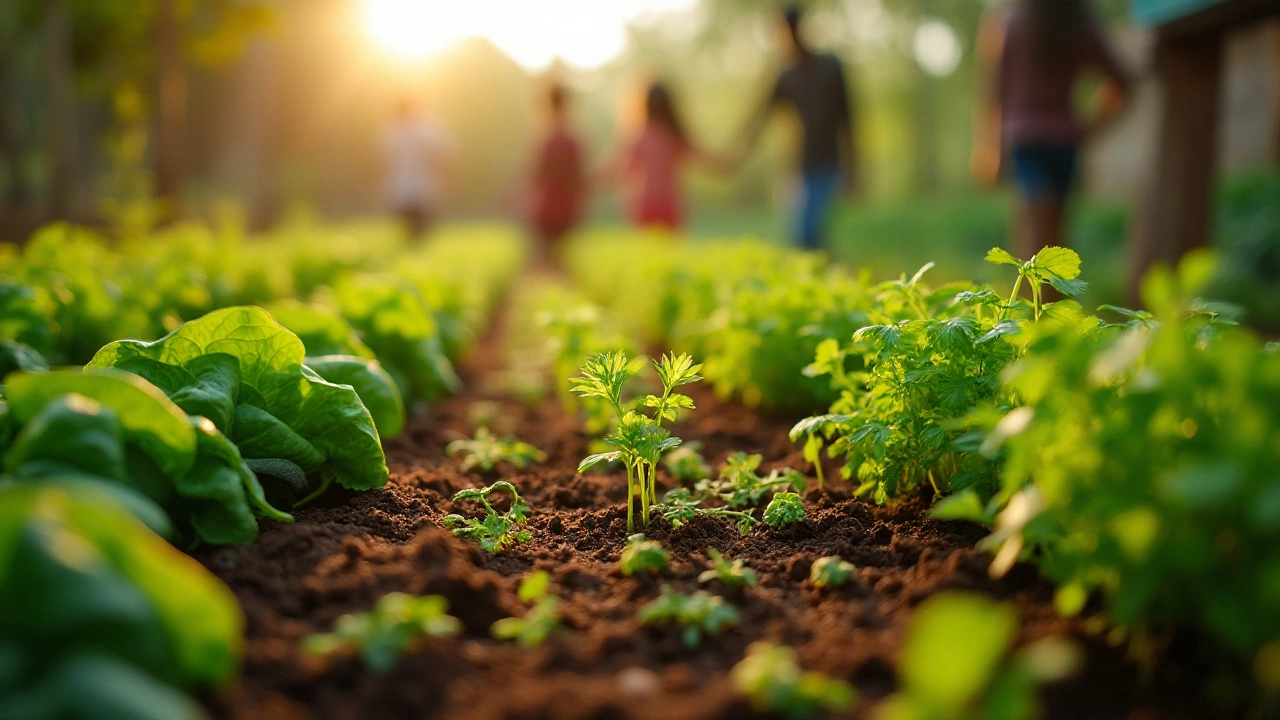
Essential Components of an Ecosystem Garden
Building a sustainable gardening haven begins by understanding the fundamental components that make up an ecosystem garden. At its core, this concept involves creating an interconnected web of life, where every plant and animal plays a vital role in maintaining balance. Biodiversity is crucial here, as it ensures that no single species dominates, which can lead to the depletion of resources. A varied plant selection not only adds beauty to your garden but attracts a range of wildlife, from pollinators like bees and butterflies to birds that help keep pest populations in check.
Water is another essential element. Incorporating features such as small ponds or rain gardens can support amphibians and invertebrates, which are important for breaking down organic matter. These water features also serve as hydration spots for birds and small mammals. Additionally, having a diverse mix of native plants that are adept at conserving water can reduce the need for artificial irrigation, aligning with sustainable gardening practices that benefit the environment and your pocket.
Soil health is often heralded as the foundation of a successful ecosystem garden. Enriched, living soil teems with earthworms, microbes, and fungi, all busily breaking down organic matter into nutrients. This creates a natural cycle that nourishes plants without reliance on chemical fertilizers. Composting kitchen scraps and garden waste supports this cycle further. Healthy soil not only promotes robust plant growth but also helps retain moisture, reducing the need for frequent watering.
Plant interactions matter too. Embracing the principles of permaculture, consider planting in layers—or strata—to mimic natural ecosystems. Trees, shrubs, perennials, and groundcovers collectively create a rich tapestry, each plant serving its purpose. For instance, taller trees provide shade and habitat, while understory shrubs offer food and shelter. Groundcover plants occupy the space, minimizing erosion and water loss. A well-designed layering system enhances the functionality and aesthetics of the garden.
The Role of Wildlife
Encouraging wildlife is indispensable for a balanced ecosystem garden. By providing food, water, and shelter, you create a welcoming habitat for beneficial creatures. This includes not only pollinators but also those considered garden heroes, such as predatory insects, birds, and even small mammals. Hedgerows and piles of fallen branches offer safe passageway and nesting sites. Nature writer Gerald Durrell once aptly stated,
"A world without animals is like a world without color."Inviting diverse wildlife leads to an ecosystem teetering on a magnificent balance, each part crucial for the garden’s health.
Strive for natural pest management. Leveraging organisms like ladybugs and lacewings to tackle aphids, for example, reduces or even eliminates the need for chemical pesticides. Companion planting, too, can prove effective—growing basil near tomatoes, for instance, can repel insects naturally. This approach highlights the interconnectedness and reliance on cooperative strategies found within natural habitats.
In summary, these elements form the beating heart of an ecosystem garden. They ensure sustainability through interdependence and ecological harmony, where nature's principles guide design and maintenance. Embrace these practices, and you're not just cultivating a garden—you're nurturing an entire ecosystem, one that strengthens the bond between humans and nature.
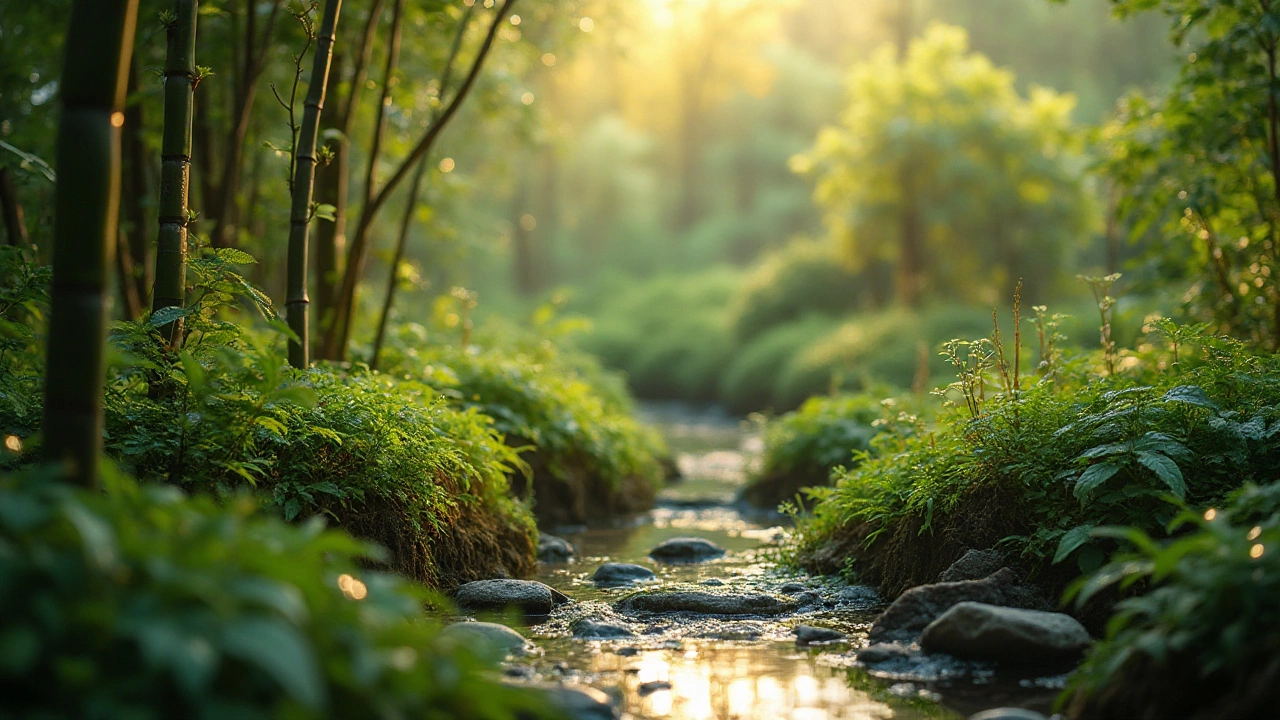
Steps to Create Your Own Ecosystem Garden
Building your own ecosystem garden is a deeply rewarding endeavor that seamlessly blends creativity with environmental consciousness. To start, it is crucial to conduct a little exploration into the natural conditions of your area. Observe the soil type, the amount of natural sunlight, and the native species you see around your neighborhood. This information will guide you in selecting plants that will thrive in your ecosystem without too much intervention. Selecting native plants is a foundational step, as they are adapted to the local climate and soil, making them more resistant to pests and less reliant on external resources such as water and fertilizer.
Begin by sketching a design plan for your garden. This plan should include various levels of plant life, from ground covers to towering trees, creating a multilayered habitat. Think about incorporating a water source, such as a small pond or birdbath, which will attract wildlife and help maintain biodiversity. Another important aspect to consider is creating different microhabitats within your garden by using hedges, logs, and stones to create shelter for insects, birds, and small mammals. This layered approach mimics natural ecosystems where different species coexist in harmony.
Once the planning is complete, the next step is preparing the soil. Healthy soil is the cornerstone of any successful garden. It supports plant life and houses countless living organisms that contribute to its fertility. Start by testing your soil to check for nutrient levels and pH balance. Amend the soil with organic compost and natural fertilizers to encourage a vibrant life underground. It's important to avoid chemical pesticides and fertilizers, as these can harm the delicate balance of your ecosystem. Instead, focus on building a sustainable gardening practice that enriches the soil over time.
Plant diversity is key to fostering a vibrant biodiversity within your ecosystem garden. When selecting plant species, aim for a variety of flowering times, colors, and structures. Such diversity supports different pollinators and wildlife over the seasons. Consider adding perennial plants that return year after year and require less maintenance. Including plants that attract beneficial insects can double up as natural pest control. Encouraging a balance of species ensures a resilient garden, capable of adapting to changes and resisting diseases.
One of the remarkable benefits of an ecosystem garden is its ability to minimize external inputs. Mulching is one effective practice. By covering the soil with organic materials like straw, leaves, or wood chips, you can conserve moisture, suppress weeds, and boost soil fertility. Mulching also fosters a home for microorganisms vital in nutrient cycling. Another strategy is to use companion planting. This method involves growing certain plants together to enhance each other's growth or provide natural pest deterrence. For example, planting marigolds among vegetables can help repel nematodes and other pests.
"The soil is not a dead, inert substance. It is a living, dynamic ecosystem," says Dr. Elaine Ingham, a renowned soil microbiologist.
As your garden begins to flourish, maintaining balance is essential. Regularly observe the interactions between different plants and wildlife. Adjust your strategies as needed, keeping in mind that fluctuations are natural as your garden matures. Allow for a bit of trial and error, embracing the lessons nature provides freely. In time, you’ll find that an ecosystem garden is a peaceful retreat, a thriving environment where you can witness the gentle dance of nature, reminding us of the beauty inherent in diversity and interdependence.
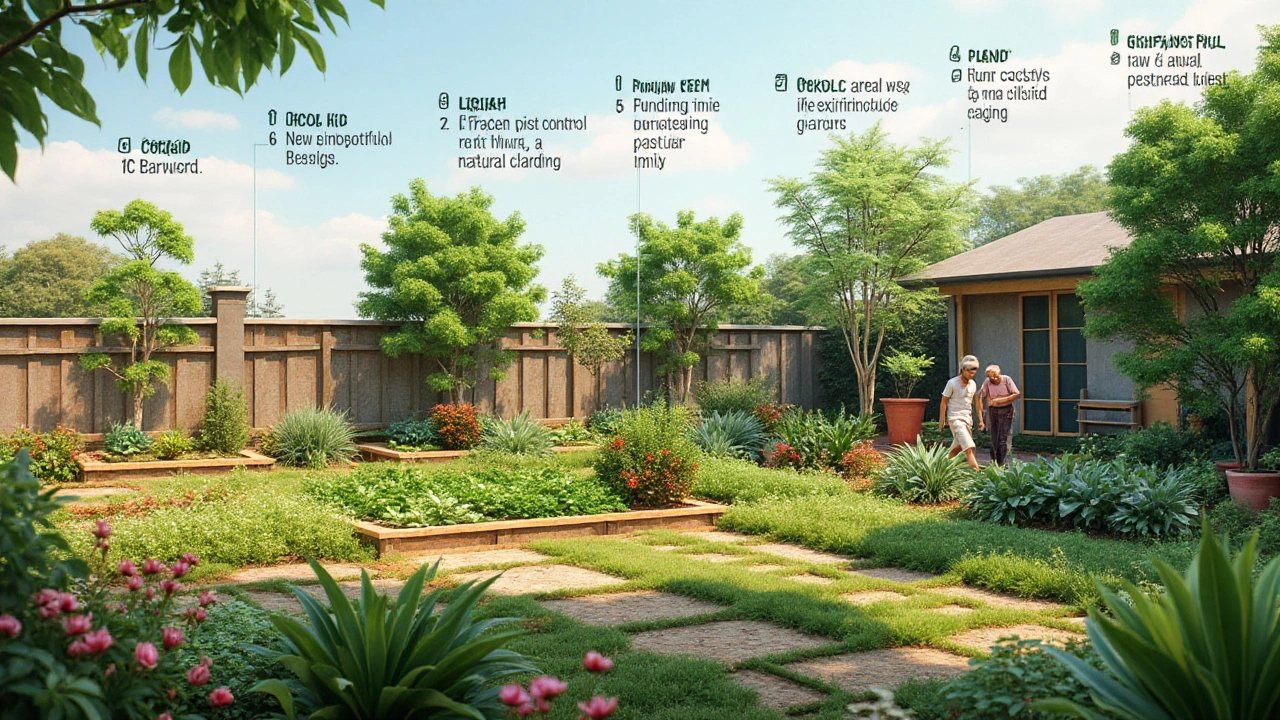
Tips for Maintaining a Healthy Ecosystem Garden
Keeping an ecosystem garden thriving involves understanding its delicate balance and giving it the attention it deserves. Much like nurturing a friendship, maintaining a garden like this means observing, adjusting, and sometimes stepping back to let nature do its thing. Start by regularly assessing the needs of your garden. This isn't about over-gardening—on the contrary, it involves learning to listen to what your garden tells you. Pay attention to the different stages of growth and the interactions within your mini-ecosystem. These observations will guide your decisions regarding watering, pruning, and even plant selection without excessive interference.
A key aspect of maintaining your sustainable gardening space is preserving soil health. Healthy soil teems with microorganisms that contribute to the nutrient cycle and support plant growth. Consider using compost, which not only replenishes nutrients but also encourages beneficial soil organisms. Regular mulching can help retain moisture while suppressing weeds, thus reducing the need for watering and chemical interventions. Also, rotate your crops each season. This not only benefits soil fertility but also disrupts pest and disease cycles, promoting the well-being of your ecosystem garden over time.
Another important area to focus on is managing plant diversity. Just like any good story needs a varied cast, your garden thrives when it hosts a variety of plants. Introduce native plants as they're already accustomed to the local climate and conditions. They require less maintenance and are more resilient. Additionally, incorporating a mix of flowering plants can attract beneficial pollinators like bees and butterflies. These insects play a crucial role in biodiversity and can make a noticeable difference in your garden’s health. A diverse plant selection also helps with natural pest control. Interesting evidence suggests that certain plants can repel pests, while some attract their natural predators. A thoughtful arrangement around the garden can keep unwanted insects at bay without the need for harmful pesticides.
Emphasizing natural pest management complements plant diversity. Encourage the presence of beneficial insects by creating habitats for them. Many prefer slightly wild, undisturbed spaces where they can shelter and breed. Build beetle banks or scatter stones and logs where these helpful creatures can thrive. Installing birdhouses and small water features also brings in birds and amphibians, which further help control the pest population. By reinforcing your garden as a sanctuary for such natural allies, you align with sustainable gardening principles of minimal intervention.
As Rachel Carson once said, "The balance of nature is built upon a series of relationships between living things." These relationships are your garden’s web of life, and understanding them fosters a self-sustaining environment.
Finally, embrace permaculture techniques for long-term success. Permaculture encourages thoughtful planning that aligns with natural patterns. Create zones in your garden with specific functions—from vegetable patches to pollinator-friendly zones—all the while considering how water flows through your landscape. Harvest rainwater and create swales to enhance water distribution. This minimizes your garden’s water usage impact and, combined with perennial planting strategies, offers a resilient framework that stands against both droughts and storms.
By following these tips and nurturing your garden intentionally, you build more than just a patch of green. You craft a thriving ecosystem garden that tells a story of nature’s resilience and your partnership with it.
